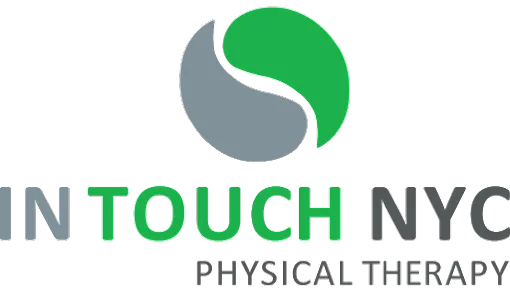New York is home to talented athletes from various sports fields. However, every sport is prone to on-field hazards that result in sports injuries, whether it’s basketball, baseball, or soccer.
Hazards of surgery after a sports injury
While many athletes opt for surgeries to take quick action against these injuries, several hazards are associated with such surgeries.
Every injury (especially those related to muscles and nerves) requires a specific amount of time to recover. In these cases, surgeries often act as a “quick-fix” so athletes can resume playing at the earliest. With this decision, athletes often make themselves vulnerable to secondary injuries. This has been a common issue recurring in the sports industry for years.
An injury in athletes study found a 23% risk of re-injury in athletes with an anterior cruciate ligament (ACL) injury who return to the field after surgery. This rate increases with age, as the body’s healing capability naturally degrades.
Post-surgery recovery time is something that athletes seldom allow themselves. Sparing 6-9 months from their schedule often impacts their career negatively.
Thus, most athletes opt for surgeries after an injury and fall into the vicious cycle of injury and re-injury.
In addition, undergoing surgery always has some risk factors (UTI, blood clots, post-op infections) that one cannot deny.
Opting for surgery after a sports injury is not a long-term or safe solution for one’s health.
Physical therapy for sports injury

A perfectly safe way of healing sports injuries is physical therapy. In case of any injury, the treatment method is the main determinant of one’s fitness after recovery.
Physical therapy is a non-invasive method of healing physical injuries with consistent massage, heat-treatment, and exercise that gradually rehabilitates the injured part to its natural functioning state.
Sports injuries often have a chance of escalating to severe impairments and can benefit substantially from physical therapy.
Method of physical therapy for sports injury
Physical therapy is mostly implemented in stages. The general outline of a physical therapy regime includes-
- Acute phase: This is the first step of recovery, where RICE (rest-ice compression-elevation) is followed for at least seven days. During this phase, the focus is on reducing inflammation and pain.
- Subacute phase: This phase focuses on massages in the injured area to help blood circulation. This is followed by slow and controlled movement practice to start rehabilitation.
- Chronic phase: In this final stage, also known as the functional stage, athletes can return to moderate-intensity training.
Types of physical therapy treatments
All physical therapy treatments follow the above-mentioned outline, but the treatment technique varies depending on the injury location and severity.
- Whirlpool therapy: This is an effective treatment that combines spa therapy with hydrotherapy and helps reduce pain and heal stiff muscles without affecting the joints.
- Cold compression: This is the most common physical therapy technique. Here ice is used on the injured area with controlled pressure to reduce swelling. The analgesic effect of ice also temporarily eases the pain.
- Therapeutic exercise: Includes functional exercises, such as running on underwater treadmills, that target slow and steady recovery of the injured area.
- Electrical stimulation: A safe method of increasing blood flow in the injured area to help it regain functionality.
Benefits of physical therapy for sports injury
Physical therapy is a non-invasive method and hence, has no obvious risks. Here are a few of the many benefits that it offers:
- It is a way of healing injuries without additional pain
- Physical therapy ensures a gradual but steady recovery
- Physical therapy doesn’t have any risks for re-injury in most cases
- Physical therapy is known to maximize mobility due to the exercise treatments
- Physical therapy also improves cardiopulmonary health due to better blood circulation.
Most commonly occurring sports injuries
Sport-related injuries range from minor muscle sprains to fractures and severe head injuries. The injuries that most commonly occur while in the field are-
- Knee injury: According to statistics, this is the most common sport-related injury in athletes. Most athletes wear a knee cap to prevent direct damage to the knee. However, friction between the knee and the kneecap can gradually build up the strain, developing into a deep injury. This type of injury also stays longer and becomes more troublesome if not treated.
- Hamstring strain: Overuse or overstretching of muscles can result in this injury. This takes place in the muscles behind one’s knee. This fairly common injury can develop from long training hours apart from activities during the match. A hamstring strain can become extremely painful and temporarily impair one’s walking ability.
- Shin Splints: This injury is indicative of a possible fracture in the lower leg. Characterized by a sharp pain in the lower leg, shin splints are most common in runners due to excessive pressure on the lower body.
- ACL tears: This happens in the ACL that connects one’s shin-bone to the knee. An ACL tear is recognized through a loud cracking noise or immense pain and swelling in the region. An athlete can’t perform with an ACL tear.
- Sciatica: This is more common in athletes involved in running, golfing, tennis, and similar sports. This injury develops as a severe pain along the sciatic nerve, which leads from the lower back through the hips into the lower legs. This injury is associated with spasms and bulging in the lower back.
Sports injury physical therapy in NYC
Despite the multiple obvious benefits of physical therapy for sports injury, it will not yield positive results unless done with expert care. Certified physicians at In Touch NYC Physical Therapy are the most reliable in this industry. Since its establishment in 2011, In Touch NYC PT has had many success stories in healing injuries and effective rehabilitation after sports injuries. Book your appointment with our expert physicians today!



